Annahnomoss
Full Member
- Joined
- Oct 4, 2012
- Messages
- 10,101
Brief Summary - ChrisG11
The system I will be using is a mixture of van Gaal and Guardiola. It requires players to be able to both play their passes and dribble with the ball in order to be able to adapt to any circumstance and any defensive system. The four main creative players in Ronaldinho, Bale, Totti and Henry boast a total of 293 goals between them in their peak periods. The full backs and Modric are there to support if necessary and create overloads. Defensively, it is important to have 4 players centrally that are defensively competent. Carvalho, de Boer and Busquets are the 3 main defenders, with Modric being the fourth who can support defence and attack. We aim to press high and the intensity of the pressure depends on the situation, where individual, zonal or traps will be used to retain possession. The side has many elite set piece takers and many players who can threaten in the box, whilst the back four is incredibly set up to deal with anything that comes into the box – should the opponents get that far. I go into detail about my system below, but it’s long so just thought I’d give a general overview.
The System
My side will operate in a 4231 formation, as this the best way to capture their best years. Being a Manchester United fan on a Manchester United forum, I’ll break down my system to the rules of our current managers philosophy, because, you know, philosophy>everything. I’ll start with our possession first.
Phase 1: Construction
This is when the ball is at the goalkeeper. I need my players to be able to spread out and create as much space as possible on the pitch. Because of this, mistakes in possession could be costly, so every player needs to be able to receive the ball in tight areas competently and successfully keep the ball. A crucial part of this phase is having a goalkeeper that can distribute the ball. The goalkeeper needs to be able to drop the ball into players’ feet or into spaces where they can receive the ball accurately in order to keep possession. This means that in our own half, we always overload the opposition 11>10 should they decide to press high, and that capable players will be able to retain possession and move onto the second phase.
Phase 2: Ball Circulation
Once we’ve got possession in the outfield, we need to have players that are able to adequately move the ball. Whether a team presses high or whether they sit deep, they have a defensive system that needs to be disorganised. The way to do this is by being composed under pressure, moving the ball across the pitch with pace and attempting to either create space to exploit the opponent or by committing a player and exploiting they’ve left in behind them. This requires players with a well rounded passing range, who have quick feet, mobile and use their body well under pressure.
Phase 3: Creativity
In this instance, my side has been able to move the ball in such a way that a gap has appeared and needs to be exploited. Here, it is essential that players have to ability to either make the telling pass or more important, carry the ball into the space and break lines. Breaking defensive lines is the most crucial and important part of this system, because this is where danger can be created and chances are made. This phase, along with phase 2, apply to anywhere on the pitch against all defensive systems. Plays have to be able to move the ball about whether they’re pressed intensely in their own third, or are trying to break down a deep block in the final third. Spaces open up all over the pitch and this needs quick thinking, intelligent players to recognise this and exploit. It could come from a full back carrying the ball forward, and centre halves carrying the ball out of defence into midfield, a midfielder driving through gaps in the opposition midfield and onto the defence or a winger getting a chance to take his man on 1v1. These are the situations we need to create in order to disorganise the opposition and take full advantage.
Phase 4: Finalisation
This stage is once we’ve created the overload and we’ve create the chance to create a goal scoring opportunity. This requires players to have excellent decision making on when the right time is to release the ball, the ability to execute the technique of whatever they are required to depending on the situation (pass, shot, cross etc.) and intelligent movement from team-mates so that the move can be completed. This is strictly in the final third and it might be movement in the box to find space for a shot, stretching the remaining defenders to be played through on goal or to create space for the ball carrier to have a shot. Of course, once it gets to this stage, there needs to be players that can score goals and are able to finish of their chances.
Defensive Organisation
Defensively, my side are going to use a number of defending principles in order to win the ball back effectively without conceding and minimising the opponents opportunities to score. This is a mixture of van Gaal and Guardiola’s approach to defending.
Pressing Triggers
There are 3 different categories of pressing that my side are going to use in order to win the ball back and put pressure on the opposition.
Individual: This is when a particular player is in any position where they aren’t in control of the ball and are able to manoeuvre it with competence. This could be when the ball is on their weaker foot, is bouncing, is in the air, to player has taken a bad touch or the player has his back to goal. In any of these instances, our team pushes up and applies pressure.
Zonal: This is where our players mark certain areas that we don’t want the opposition to exploit. Most of these will be central, so we will not allow the opponent through the centre of the pitch and subsequently force them to either go back or out wide. This is where we will have a compact, 4411 shape and will hold position so that we remain organised and in control of situations until the opponent gives the opportunity to win the ball back.
Traps: By marking certain spaces, this allows us to force play and set traps that the opposition can fall into. From this, we will mainly be looking to split the centre halves when necessary and forcing them to go down the touchline. Once the ball is at the full back, the winger charges over to block the inside pass and restricts their option to either a ball into the winger, who will have our full back and CM pressing him intently, or to play a long percentage ball – where we can win the first/seconds and retain possession. Our traps will be set down our right hand side of the pitch due to that being our most defensively sound area, blocking the opponents right hand side which also allows our deepest midfielder to sweep up any loose balls into the middle.
The 6 second Rule
One I’m sure everyone has heard of under Guardiola. This will be used every time the ball is lost in the opposition half and one of the individual pressing triggers is evident. This is so that we are quicker in defensive transition than the opposition is in attack, which allows us to win the ball back quickly whilst the opponent is uncomfortable. This is considerably intense pressure and will only be used for 6 seconds in these circumstances.
Recovery
Whenever the opponent is in controlled possession, or has managed to break the first phase of pressing, the team goes into recovery. This is where we retreat as an organised bunch, close in and slow the opposition whilst our men get behind the ball. Once and during recovery, we set up our zonal defensive formation and drop however deep is necessary until we are fully organised. We then go through the same process of setting traps unless we are defending on the edge of our box. Our defensive line otherwise should always be quite high and never more than 15 yards away from the midfield line, restricting space in between the lines. This will obviously leave space in behind, so players will have to be aware and quick in defence, whilst the goalkeeper will have to be able to sweep.
The system I will be using is a mixture of van Gaal and Guardiola. It requires players to be able to both play their passes and dribble with the ball in order to be able to adapt to any circumstance and any defensive system. The four main creative players in Ronaldinho, Bale, Totti and Henry boast a total of 293 goals between them in their peak periods. The full backs and Modric are there to support if necessary and create overloads. Defensively, it is important to have 4 players centrally that are defensively competent. Carvalho, de Boer and Busquets are the 3 main defenders, with Modric being the fourth who can support defence and attack. We aim to press high and the intensity of the pressure depends on the situation, where individual, zonal or traps will be used to retain possession. The side has many elite set piece takers and many players who can threaten in the box, whilst the back four is incredibly set up to deal with anything that comes into the box – should the opponents get that far. I go into detail about my system below, but it’s long so just thought I’d give a general overview.
The System
My side will operate in a 4231 formation, as this the best way to capture their best years. Being a Manchester United fan on a Manchester United forum, I’ll break down my system to the rules of our current managers philosophy, because, you know, philosophy>everything. I’ll start with our possession first.
Phase 1: Construction
This is when the ball is at the goalkeeper. I need my players to be able to spread out and create as much space as possible on the pitch. Because of this, mistakes in possession could be costly, so every player needs to be able to receive the ball in tight areas competently and successfully keep the ball. A crucial part of this phase is having a goalkeeper that can distribute the ball. The goalkeeper needs to be able to drop the ball into players’ feet or into spaces where they can receive the ball accurately in order to keep possession. This means that in our own half, we always overload the opposition 11>10 should they decide to press high, and that capable players will be able to retain possession and move onto the second phase.
Phase 2: Ball Circulation
Once we’ve got possession in the outfield, we need to have players that are able to adequately move the ball. Whether a team presses high or whether they sit deep, they have a defensive system that needs to be disorganised. The way to do this is by being composed under pressure, moving the ball across the pitch with pace and attempting to either create space to exploit the opponent or by committing a player and exploiting they’ve left in behind them. This requires players with a well rounded passing range, who have quick feet, mobile and use their body well under pressure.
Phase 3: Creativity
In this instance, my side has been able to move the ball in such a way that a gap has appeared and needs to be exploited. Here, it is essential that players have to ability to either make the telling pass or more important, carry the ball into the space and break lines. Breaking defensive lines is the most crucial and important part of this system, because this is where danger can be created and chances are made. This phase, along with phase 2, apply to anywhere on the pitch against all defensive systems. Plays have to be able to move the ball about whether they’re pressed intensely in their own third, or are trying to break down a deep block in the final third. Spaces open up all over the pitch and this needs quick thinking, intelligent players to recognise this and exploit. It could come from a full back carrying the ball forward, and centre halves carrying the ball out of defence into midfield, a midfielder driving through gaps in the opposition midfield and onto the defence or a winger getting a chance to take his man on 1v1. These are the situations we need to create in order to disorganise the opposition and take full advantage.
Phase 4: Finalisation
This stage is once we’ve created the overload and we’ve create the chance to create a goal scoring opportunity. This requires players to have excellent decision making on when the right time is to release the ball, the ability to execute the technique of whatever they are required to depending on the situation (pass, shot, cross etc.) and intelligent movement from team-mates so that the move can be completed. This is strictly in the final third and it might be movement in the box to find space for a shot, stretching the remaining defenders to be played through on goal or to create space for the ball carrier to have a shot. Of course, once it gets to this stage, there needs to be players that can score goals and are able to finish of their chances.
Defensive Organisation
Defensively, my side are going to use a number of defending principles in order to win the ball back effectively without conceding and minimising the opponents opportunities to score. This is a mixture of van Gaal and Guardiola’s approach to defending.
Pressing Triggers
There are 3 different categories of pressing that my side are going to use in order to win the ball back and put pressure on the opposition.
Individual: This is when a particular player is in any position where they aren’t in control of the ball and are able to manoeuvre it with competence. This could be when the ball is on their weaker foot, is bouncing, is in the air, to player has taken a bad touch or the player has his back to goal. In any of these instances, our team pushes up and applies pressure.
Zonal: This is where our players mark certain areas that we don’t want the opposition to exploit. Most of these will be central, so we will not allow the opponent through the centre of the pitch and subsequently force them to either go back or out wide. This is where we will have a compact, 4411 shape and will hold position so that we remain organised and in control of situations until the opponent gives the opportunity to win the ball back.
Traps: By marking certain spaces, this allows us to force play and set traps that the opposition can fall into. From this, we will mainly be looking to split the centre halves when necessary and forcing them to go down the touchline. Once the ball is at the full back, the winger charges over to block the inside pass and restricts their option to either a ball into the winger, who will have our full back and CM pressing him intently, or to play a long percentage ball – where we can win the first/seconds and retain possession. Our traps will be set down our right hand side of the pitch due to that being our most defensively sound area, blocking the opponents right hand side which also allows our deepest midfielder to sweep up any loose balls into the middle.
The 6 second Rule
One I’m sure everyone has heard of under Guardiola. This will be used every time the ball is lost in the opposition half and one of the individual pressing triggers is evident. This is so that we are quicker in defensive transition than the opposition is in attack, which allows us to win the ball back quickly whilst the opponent is uncomfortable. This is considerably intense pressure and will only be used for 6 seconds in these circumstances.
Recovery
Whenever the opponent is in controlled possession, or has managed to break the first phase of pressing, the team goes into recovery. This is where we retreat as an organised bunch, close in and slow the opposition whilst our men get behind the ball. Once and during recovery, we set up our zonal defensive formation and drop however deep is necessary until we are fully organised. We then go through the same process of setting traps unless we are defending on the edge of our box. Our defensive line otherwise should always be quite high and never more than 15 yards away from the midfield line, restricting space in between the lines. This will obviously leave space in behind, so players will have to be aware and quick in defence, whilst the goalkeeper will have to be able to sweep.

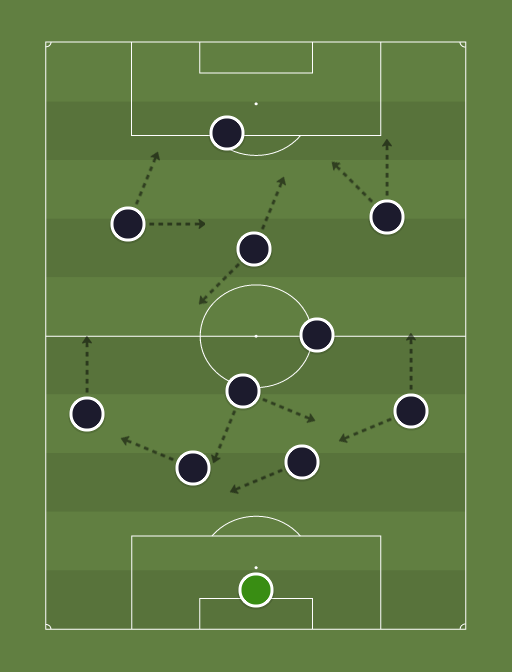



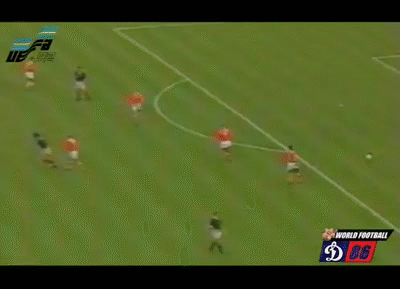
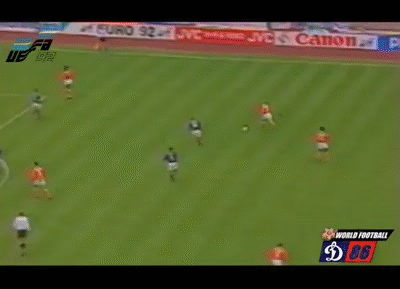
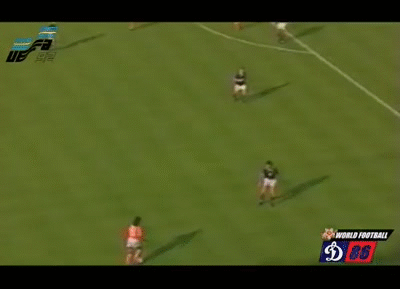
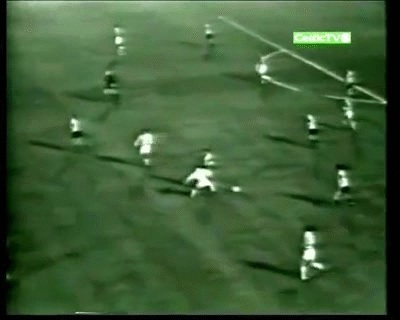
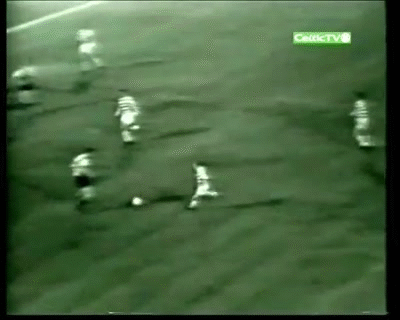
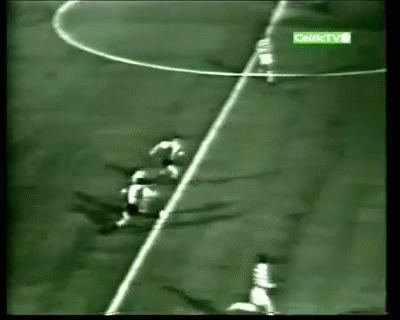
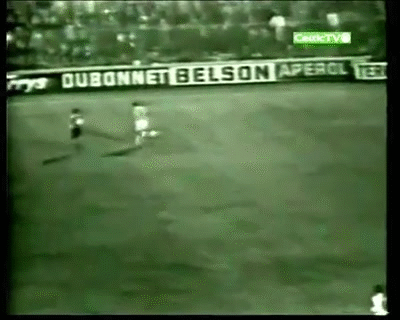
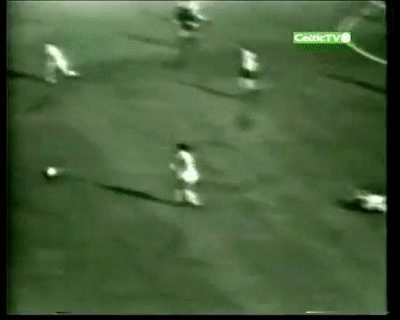

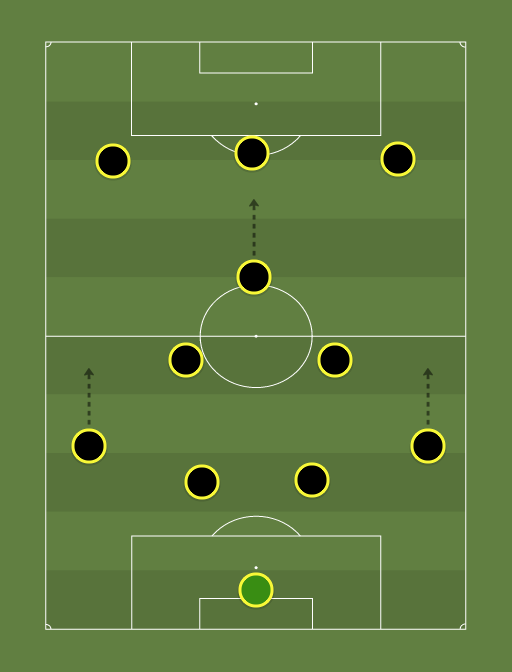
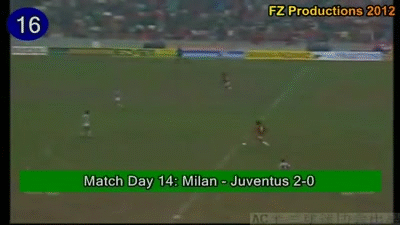
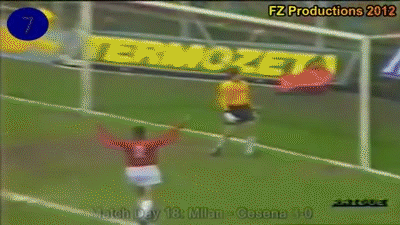
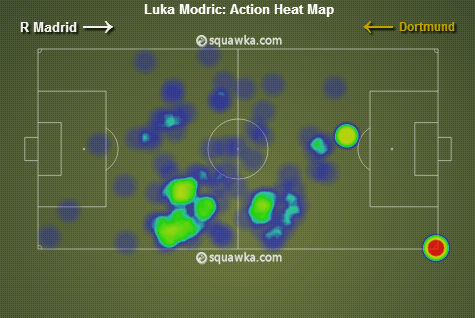
 at that video! I somewhat agree regarding our attack - there was an element of trying to crowbar both the big names into the line up as we weren't sure how Krankl would be received.
at that video! I somewhat agree regarding our attack - there was an element of trying to crowbar both the big names into the line up as we weren't sure how Krankl would be received.